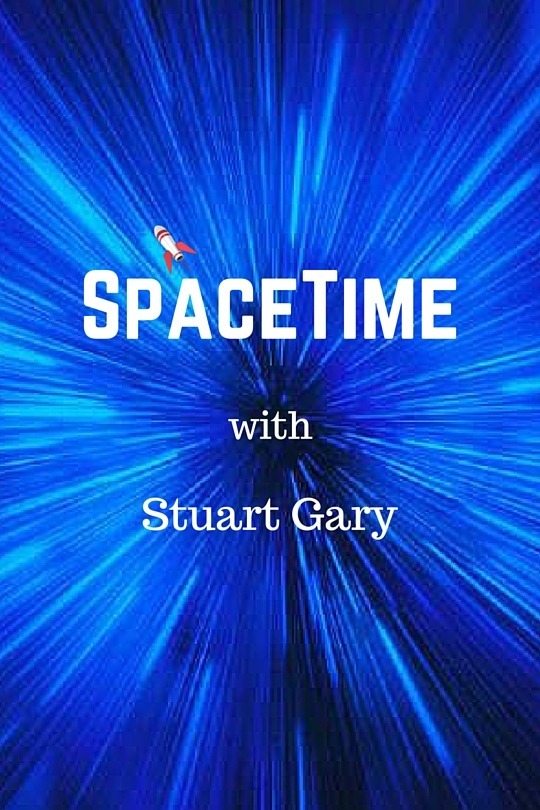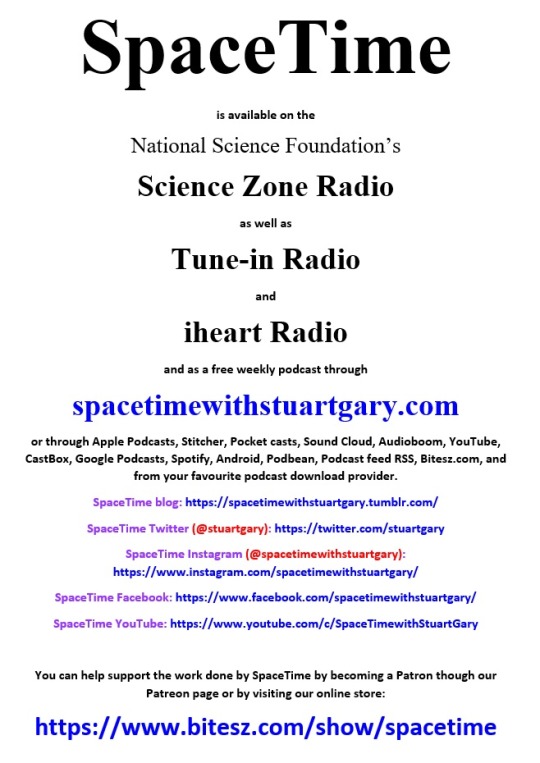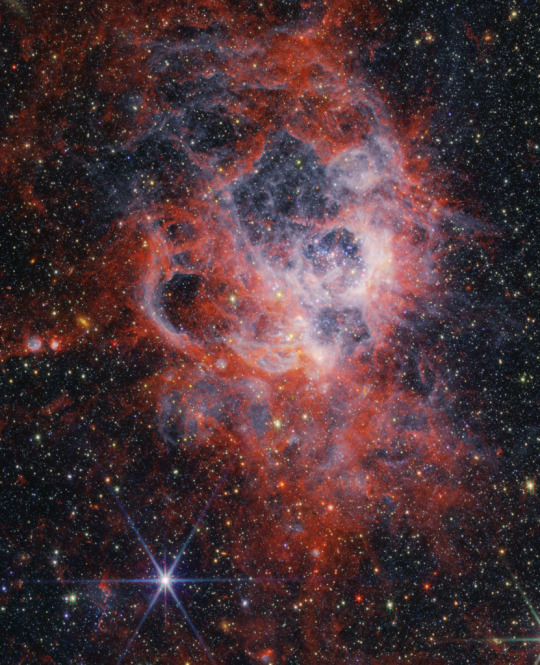Text
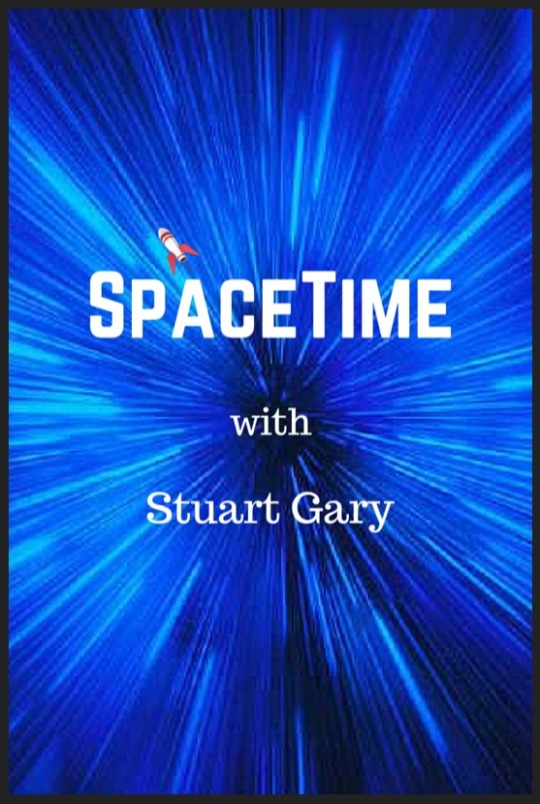
New SpaceTime out Wednesday....
SpaceTime 20240424 Series 27 Episode 50
NASA confirms its Dragonfly rotorcraft mission to Saturn's moon Titan
NASA has confirmed that it will send a rotocopter mission to the organic-rich Saturnian world of Titan.


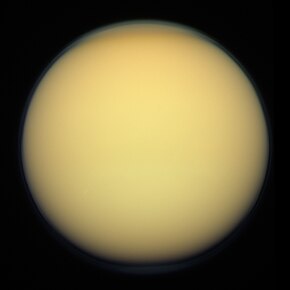
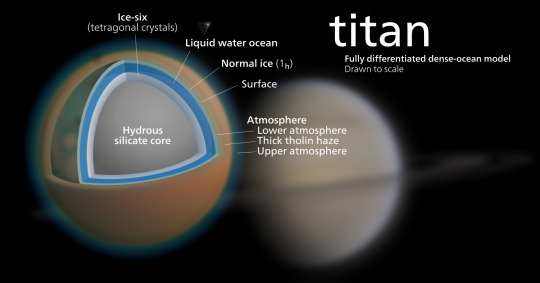

NASA say good bye for now to their Mars Ingenuity Helicopter
NASA scientists have said good bye for now to their intrepid little Mars Ingenuity Helicopter which was grounded in January following rotor damage while flying over the Red planet’s Jezero Crater.


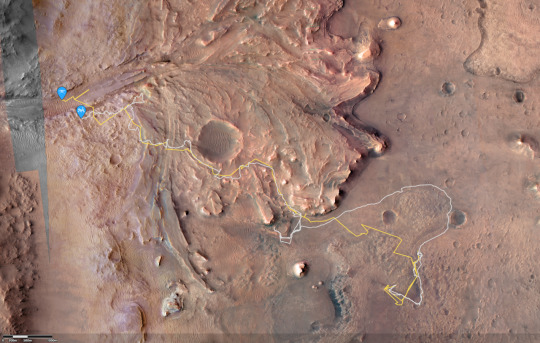
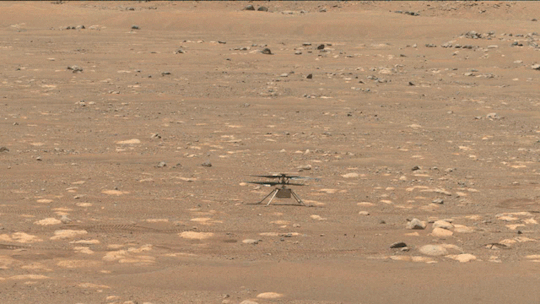

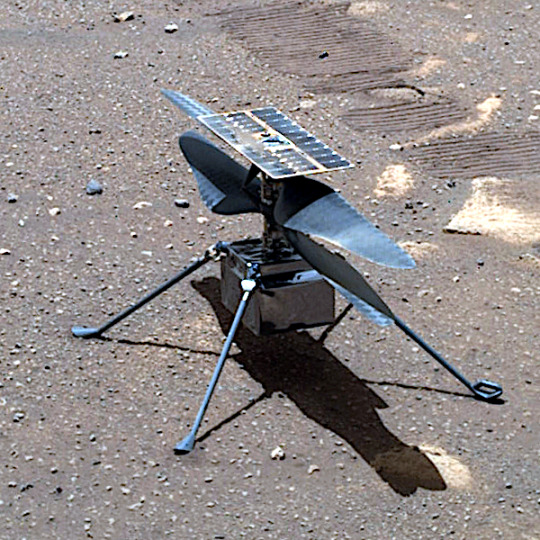

South Korea launches a new spy satellite
South Korea has launched its second domestically made spy satellite into orbit

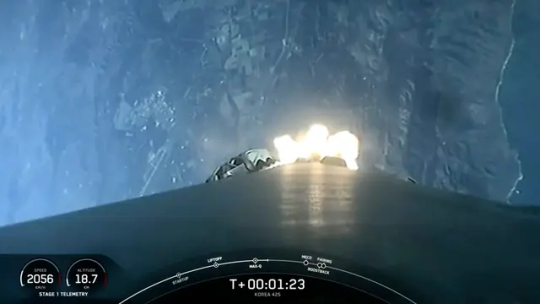


The Science Report
The Great Barrier Reef now going through a fifth bleaching event due to climate change.



Palaeontologists have described three unusual new species of giant fossil kangaroo.
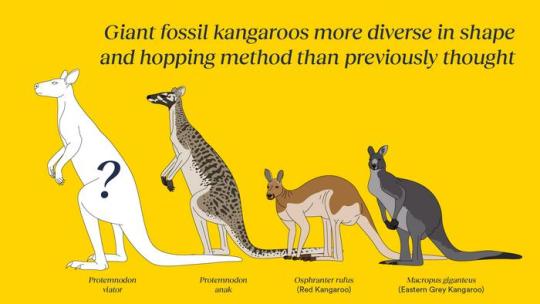
The first ever ‘World Cybercrime Index,
Alex on Tech AMD rolls out its new AI-enhanced chips
SpaceTime covers the latest news in astronomy & space sciences.
The show is available every Monday, Wednesday and Friday through Apple Podcasts (itunes), Stitcher, Google Podcast, Pocketcasts, SoundCloud, Bitez.com, YouTube, your favourite podcast download provider, and from www.spacetimewithstuartgary.com
SpaceTime is also broadcast through the National Science Foundation on Science Zone Radio and on both i-heart Radio and Tune-In Radio.
SpaceTime daily news blog: http://spacetimewithstuartgary.tumblr.com/
SpaceTime facebook: www.facebook.com/spacetimewithstuartgary
SpaceTime Instagram @spacetimewithstuartgary
SpaceTime twitter feed @stuartgary
SpaceTime YouTube: @SpaceTimewithStuartGary
SpaceTime -- A brief history
SpaceTime is Australia’s most popular and respected astronomy and space science news program – averaging over two million downloads every year. We’re also number five in the United States. The show reports on the latest stories and discoveries making news in astronomy, space flight, and science. SpaceTime features weekly interviews with leading Australian scientists about their research. The show began life in 1995 as ‘StarStuff’ on the Australian Broadcasting Corporation’s (ABC) NewsRadio network. Award winning investigative reporter Stuart Gary created the program during more than fifteen years as NewsRadio’s evening anchor and Science Editor. Gary’s always loved science. He studied astronomy at university and was invited to undertake a PHD in astrophysics, but instead focused on his career in journalism and radio broadcasting. He worked as an announcer and music DJ in commercial radio, before becoming a journalist and eventually joining ABC News and Current Affairs. Later, Gary became part of the team that set up ABC NewsRadio and was one of its first presenters. When asked to put his science background to use, Gary developed StarStuff which he wrote, produced and hosted, consistently achieving 9 per cent of the national Australian radio audience based on the ABC’s Nielsen ratings survey figures for the five major Australian metro markets: Sydney, Melbourne, Brisbane, Adelaide, and Perth. The StarStuff podcast was published on line by ABC Science -- achieving over 1.3 million downloads annually. However, after some 20 years, the show finally wrapped up in December 2015 following ABC funding cuts, and a redirection of available finances to increase sports and horse racing coverage. Rather than continue with the ABC, Gary resigned so that he could keep the show going independently. StarStuff was rebranded as “SpaceTime”, with the first episode being broadcast in February 2016. Over the years, SpaceTime has grown, more than doubling its former ABC audience numbers and expanding to include new segments such as the Science Report -- which provides a wrap of general science news, weekly skeptical science features, special reports looking at the latest computer and technology news, and Skywatch – which provides a monthly guide to the night skies. The show is published three times weekly (every Monday, Wednesday and Friday) and available from the United States National Science Foundation on Science Zone Radio, and through both i-heart Radio and Tune-In Radio.
8 notes
·
View notes
Text

Workers removing the Space Shuttle Enterprise from the 747 SCA in the Mate-Demate Device at the Kennedy Space Center, Florida.
Date: April 25, 1979
NASA ID: link
11 notes
·
View notes
Text
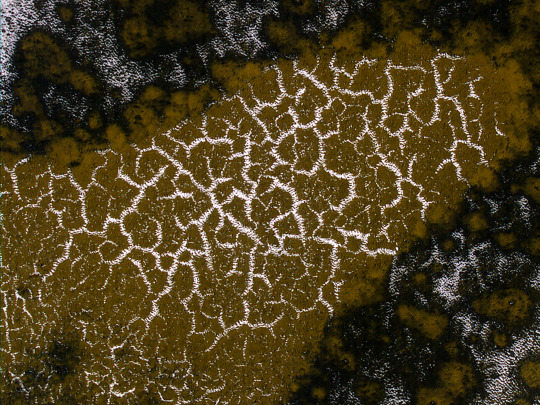
HiPOD: Defrosting Dunes
This image shows a field a sand dunes in the Martian springtime while the seasonal carbon dioxide frost is sublimating into the air. This sublimation process is not at all uniform, instead creating a pattern of dark spots.
In addition, the inter-dune areas are also striking, with bright frost persisting in the troughs of polygons. Our enhanced-color cutout is centered on a brownish-colored inter-dune area. (Enhanced color cutout is less than 1 km across.)
ID: ESP_082672_1180
date: 16 March 2024
altitude: 252 km
NASA/JPL-Caltech/UArizona
27 notes
·
View notes
Photo

How Safe Do People Feel to Walk Alone at Night in Europe, 2024.
153 notes
·
View notes
Text

The Second Law of Thermodynamics
The second law of thermodynamics establishes the concept of entropy and constrains natural heat transfer. Simply put, it states that heat spontaneously flows from hot to cold. The second law refines scenarios that would be permissible under the first law (for example, heat flowing from cold objects to hot objects does not violate conservation of energy), narrowing down further what natural processes actually occur.
In other words, the second law could also be stated as follows:
The entropy of a cyclic process with either increase or stay the same
Not all heat can be converted to work in a cyclic process
Sources/Further Reading: (Image source - NASA) (HyperPhysics) (Wikipedia) (New Scientist)
9 notes
·
View notes
Text





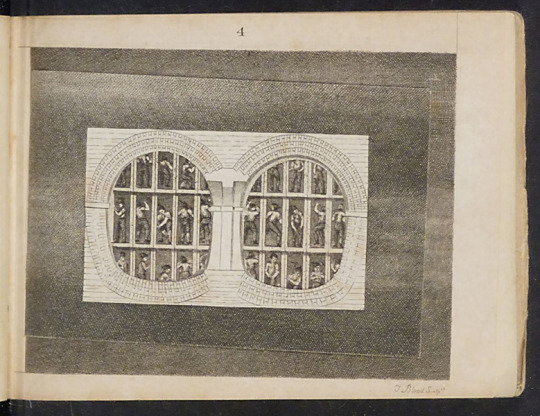



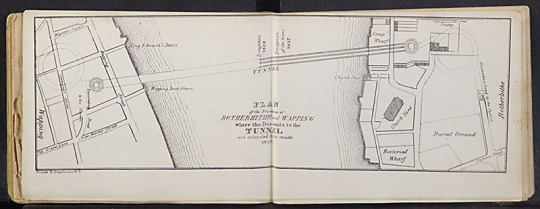
Marc Isambard Brunel – Scientist of the Day
Marc Isambard Brunel, a British mechanical and civil engineer, was born Apr. 25, 1769.
read more...
4 notes
·
View notes
Text

NASA's Chandra releases timelapse movies of Crab Nebula and Cassiopeia A
New movies of two of the most famous objects in the sky—the Crab Nebula and Cassiopeia A—are being released from NASA's Chandra X-ray Observatory. Each includes X-ray data collected by Chandra over about two decades. They show dramatic changes in the debris and radiation remaining after the explosion of two massive stars in our galaxy.
The Crab Nebula, the result of a bright supernova explosion seen by Chinese and other astronomers in the year 1054, is 6,500 light-years from Earth. At its center is a neutron star, a super-dense star produced by the supernova. As it rotates at about 30 times per second, its beam of radiation passes over the Earth every orbit, like a cosmic lighthouse.
As the young pulsar slows down, large amounts of energy are injected into its surroundings. In particular, a high-speed wind of matter and anti-matter particles plows into the surrounding nebula, creating a shock wave that forms the expanding ring seen in the movie. Jets from the poles of the pulsar spew X-ray-emitting matter and antimatter particles in a direction perpendicular to the ring.
Over 22 years, Chandra has made many observations of the Crab Nebula. With this long runtime, astronomers see clear changes in both the ring and the jets in the new movie. Previous Chandra movies showed images taken from much shorter time periods—a 5-month period between 2000 and 2001 and over 7 months between 2010 and 2011 for another.
The longer timeframe highlights mesmerizing fluctuations, including whip-like variations in the X-ray jet that are only seen in this much longer movie. A new set of Chandra observations will be conducted later this year to follow changes in the jet since the last Chandra data was obtained in early 2022.
The second billing in this doubleheader is just as spectacular. Cassiopeia A (Cas A for short) is the remains of a supernova that is estimated to have exploded about 340 years ago in Earth's sky. While other Chandra movies of Cas A have previously been released, including one with data extending from 2000 to 2013, this new movie is substantially longer, featuring data from 2000 through to 2019.
The outer region of Cas A shows the expanding blast wave of the explosion. The blast wave is composed of shock waves, similar to the sonic booms generated by a supersonic aircraft. These expanding shock waves are sites where particles are being accelerated to energies that are higher than the most powerful accelerator on Earth, the Large Hadron Collider.
As the blast wave travels outwards, it encounters surrounding material and slows down, generating a second shock wave that travels backward relative to the blast wave, analogous to a traffic jam traveling backward from the scene of an accident on a highway.
Cas A has been one of the most highly observed targets and publicly released images from the Chandra mission. It was Chandra's official first light image in 1999 after the Space Shuttle Columbia launched into orbit and quickly discovered a point source of X-rays in Cas A's center for the first time, later confirmed to be a neutron star.
Over the years, astronomers have used Chandra to discover evidence for "superfluid" inside Cas A's neutron star, to reveal that the original massive star may have turned inside out as it exploded, and to take an important step in pinpointing how giant stars explode.
Chandra has also mapped the elements forged inside the star, which are now moving into space to help seed the next generation of stars and planets. More recently, Chandra data was combined with data from NASA's James Webb Space Telescope to help determine the origin of mysterious structures within the remnant.
The images used in the latest Cas A movie have been processed using a state-of-the-art processing technique led by Yusuke from Rikkyo University in Japan to capitalize on Chandra's sharp X-ray vision fully. The paper describing their work was published in The Astrophysical Journal and is available online.
These two movies show Chandra's capabilities of documenting changes in astronomical objects over human timeframes. Such movies would not be possible without Chandra's archives, which serve as public repositories for the data collected over Chandra's nearly 25 years of operations.
1 note
·
View note

